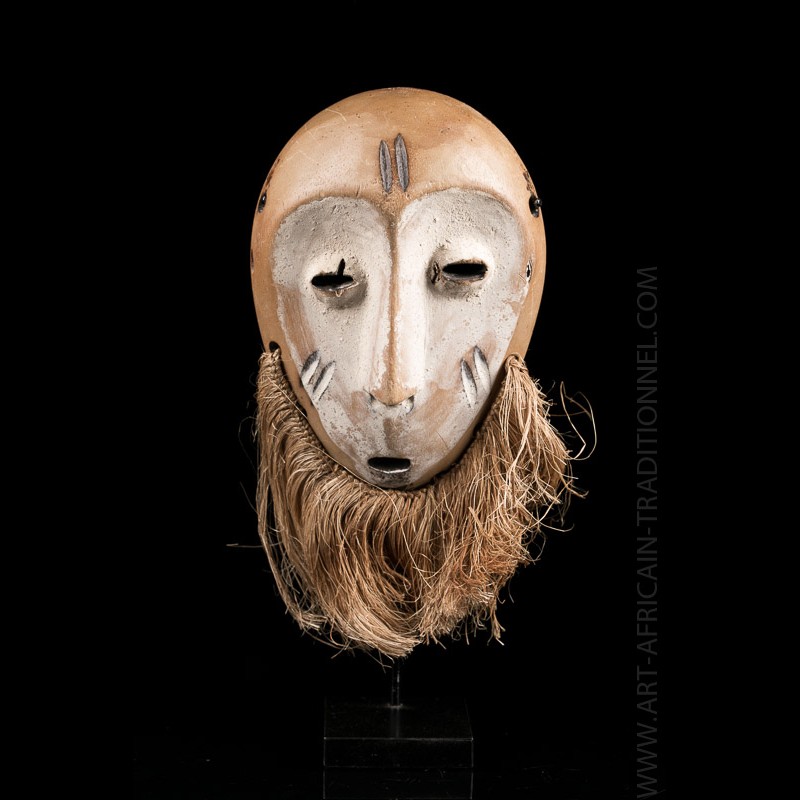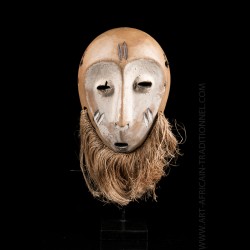













The miniature African masks constitute some of the most important insignia of the second category of Bwami.
Generally, these miniature masks, known as lukwakongo, have a heart-shaped face framed by a line formed by the nose, the eyebrows and the cheeks.
The holes which run around the lower edge of this African mask would have originally held a beard made of liana fibers. Lukwakongo are never worn on the face, but rather are attached to the arm or displayed on a fence during Bwami meetings.
Data sheet

The miniature African masks constitute some of the most important insignia of the second category of Bwami.
Generally, these miniature masks, known as lukwakongo, have a heart-shaped face framed by a line formed by the nose, the eyebrows and the cheeks.
The holes which run around the lower edge of this African mask would have originally held a beard made of liana fibers. Lukwakongo are never worn on the face, but rather are attached to the arm or displayed on a fence during Bwami meetings.